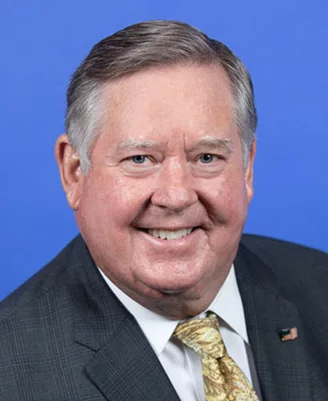This story was originally published by CalMatters. Sign up for their newsletters.
###
Last year Republican Rep. Ken Calvert, the longest-serving Republican of California’s delegation, narrowly held his seat against a former federal prosecutor, Democrat Will Rollins.
This year he faces eight challengers, and the possibility that his area, California District 41, could be redrawn to give Democratic candidates the advantage.
Gov. Gavin Newsom is proposing what lawmakers are calling an emergency redistricting plan for California, aimed at turning at least five red congressional seats blue. Calvert’s Inland Empire district is one of those targets.
Newsom floated his plan after Texas began redrawing its political lines to eliminate five Democratic seats. Texas Gov. Greg Abbott is pushing the proposal with the backing of President Donald Trump, who wants to bolster the GOP’s House majority in next year’s midterm election by skewing voting districts in Republicans’ favor.
“Donald Trump called up Governor Abbott for one simple reason: to rig the 2026 elections,” Newsom said in a statement, vowing to “fight fire with fire.”
But he faces some hurdles. Unlike Texas, where the legislature sets political boundaries, California relies on an independent citizens’ commission to draw voting lines. California voters approved the redistricting commission for state offices in 2008, empowering the bipartisan body to set boundaries based on geographic areas and “communities of interest,” which can include cultural and economic characteristics. In 2010, voters added congressional districts to the process.
To circumvent that, Newsom would ask California voters to approve new boundaries that would remain in place through 2030. He plans to release proposed voting maps next week. Then the state legislature has to authorize a ballot measure by Aug. 22 to place the redistricting plan on the November ballot.
Last week Newsom hosted Texas lawmakers who fled the state to delay a vote on its redistricting effort. And on Monday he sent Trump a letter outlining California’s counteroffensive. “You are playing with fire, threatening to destabilize democracy, while knowing that California can neutralize any gains you hope to make,” Newsom wrote.
Although the governor has been leading the charge for redistricting, his office said the legislature is handling the maps. “That is not something our office is actively involved in,” Brandon Richards, a spokesperson for the governor’s office, told CalMatters in an email.
Calvert didn’t comment on how the redistricting proposal would affect his district, but said the plan undermines California’s citizen-led redistricting process.
“I strongly oppose the scheme being orchestrated behind closed doors by Sacramento politicians to take constitutionally afforded power away from the Independent Citizens Redistricting Commission and replace it with a process that would allow legislators to draw district maps that are gerrymandered to benefit themselves and their political allies,” Calvert said in a statement to CalMatters. “A partisan political gerrymander is not what the voters of California want as they clearly stated when they passed the VOTERS FIRST Act and participated in the Independent Citizens Redistricting Commission process.”
If voters approve the new maps it could put Calvert’s seat at risk. Previous redistricting in 2021 added the liberal Coachella Valley to conservative parts of western Riverside County, making it a more competitive race. Rollins brought a tightly run campaign and $8 million war chest to the fight and lost by just 3% in November.
With even more Democrat-friendly boundaries and a wide field of candidates that include business executives, an educator and a pop star, the swing race would likely attract renewed national attention and campaign donations.

CLICK TO MANAGE